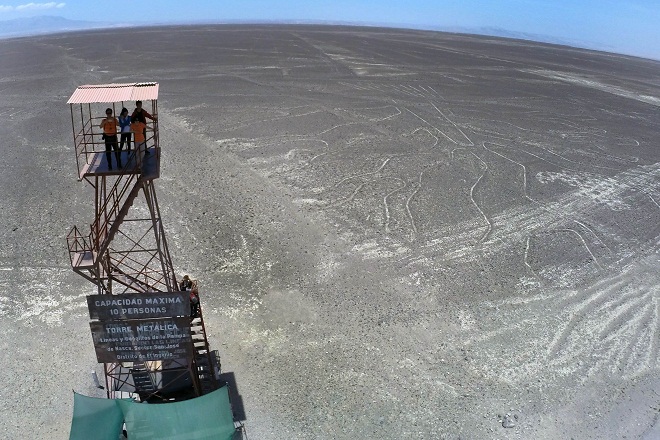Team identifies birds in 3 Nazca drawings
June 23, 2019
Sapporo--A team including researchers from the Hokkaido University Museum has identified two of the birds in 16 geoglyphs in the Nazca Lines in southern Peru, a UNESCO World Heritage Site, as pelicans and one as a hook-billed hermit, a type of hummingbird.
With neither pelicans nor hook-billed hermits inhabiting areas around the Nazca Lines, the research team hopes that the outcome of its study will help find answers to the mysteries about the famous group of geoglyphs, including why they were created.
The team conducted a detailed ornithological research on the 16 bird drawings, specifically analyzing their shapes and comparing their characteristics.
The two geoglyphs of pelicans were identified from their crests and the shapes of their beaks and chests.
The other one has already been believed to be of a hummingbird. The team confirmed the bird in the work as a hook-billed hermit from its tail part, and its thin and long beak.
The team could not identify the birds for the 13 remaining geoglyphs.
Seabirds herald the start of a rainy season in and around Nazca, Masaki Eda, associate professor for archaeozoology at the museum in the northernmost Japan prefecture of Hokkaido, said, citing a local folk tale that seawater dropped into the mountain by seabirds flow down to the Nazca plateau.
"The drawings of pelicans may have been created to pray for rain," Eda said.
Images of birds are found on clay pots and textiles produced around the same time when the Nazca drawings were created, while a large amount of bird carcasses has been found from ruins of local temples.
"I hope to figure out why the Nazca drawings were created by specifying and comparing the birds offered to gods in rituals and those described on clay pots that were used in daily life," Eda said. Jiji Press
Latest Videos
- THE UNTOLD STORY EXPERT INSIGHTS INTO THE UKRAINE
- NEGOTIATING A NEW ORDER US RUSSIA TALKS ON UKRAIN
- Ukraine: A Pawn in the Geopolitical Game? Will Trump Intervene?
- US VP VANCE CRITICIZES EUROPEAN DEMOCRACIES AT MUNICH SECURITY CONFERENCE
- UNCOVERING THE WEB OF DECEIT: CIA INFILTRATION OF THE MEDIA
- SHIFTING SANDS: TULSI GABBARD’S CONFIRMATION AND THE EVOLVING GLOBAL LANDSCAPE
- FAUCI SCANDAL: A THREAT TO GLOBAL HEALTH AND DEMOCRACY






